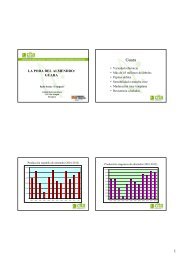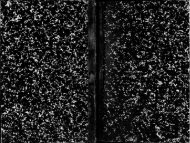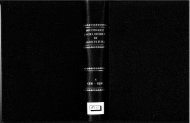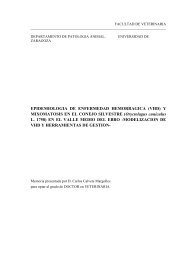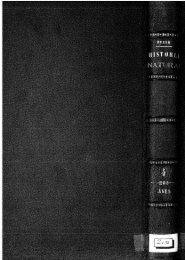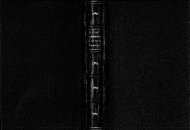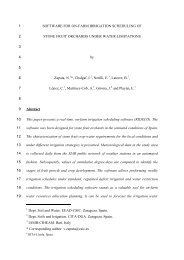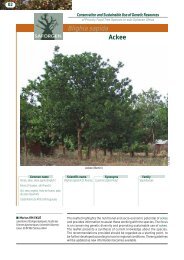1 A Recursive Dynamic Computable General Equilibrium Model For ...
1 A Recursive Dynamic Computable General Equilibrium Model For ...
1 A Recursive Dynamic Computable General Equilibrium Model For ...
You also want an ePaper? Increase the reach of your titles
YUMPU automatically turns print PDFs into web optimized ePapers that Google loves.
Spain on (i) the biophysical characteristics of the land resource, such as soil, terrain slope<br />
and climate; with (ii) growing requirements of crops (solar radiation, temperature, humidity,<br />
etc.), to calculate the amount of land that may be classified as suitable for producing each<br />
crop and the maximum potential and agronomical attainable yield.<br />
The suitability and crop yield estimates are carried out for grid cells of 5 minutes<br />
latitude/longitude (equivalent to surfaces of 9.3 km ( 9.3 km at the equator), and for three<br />
alternative generic levels of technology (combination of inputs and management): ‘low’,<br />
using neither fertilizers, pesticides nor improved seeds and using only mechanical tools; 2.<br />
‘intermediate’, with some use of fertilizers, pesticides, improved seeds and mechanical<br />
tools; and ‘high’, with full use of all required inputs and management practices as in<br />
advanced commercial farming. The resulting average attainable yields for each cell, crop<br />
and technology are then compared with those obtainable under the same climate and<br />
technology but without soil and terrain constraints (the so-called Maximum Constraint-<br />
Free Yield).<br />
The potential land in each grid cell for each crop and technology level, is then<br />
subdivided into five suitability classes according to attainable yield ranges relative to<br />
maximum constraint-free crop yields (GAEZ study, p. 38): ‘very suitable’ (80-100%),<br />
‘suitable’ (60-80%), ‘moderately suitable’ (40-60%) ‘marginally suitable’ (20-40%), and ‘not<br />
suitable’ (0-20%). Combining the information between suitability classes and technology<br />
input levels, results on the extension of land and yield potential for each grid cell (0.5<br />
minutes latitude/longitude) is obtained at the so-called ‘mixed input’ technology. The<br />
procedure of calculus consists of selecting first the extension of land very suitable and<br />
suitable at high level of inputs; then the extension of land (of the remaining extent available<br />
in the grid-cell) very suitable, suitable or moderately suitable at intermediate level of inputs;<br />
and finally, the remaining extensions of land defined as suitable (any degree of suitability) at<br />
the low level of inputs (GAEZ study, p.80). Following these three steps but applied only to<br />
the crops with the largest extensions, an overall figure of rain-fed land potential is also<br />
calculated.<br />
Results of the GAEZ study are published on the web site of IIASA:<br />
HYPERLINK: http://www.iiasa.ac.at/Research/LUC/SAEZ/index.html<br />
<strong>For</strong> each crop, there is a spreadsheet that contains one page for each level of inputtechnology<br />
(low, intermediate, high and mixed). Within each page, land areas and yields are<br />
shown for the five land suitability categories, and for each country. <strong>For</strong> practicability, we<br />
have chosen the data sets corresponding to the use of ‘mixed levels of inputs’. Likewise, we<br />
have chosen data corresponding to the first four suitability categories, from very suitable to<br />
marginally suitable.<br />
21



